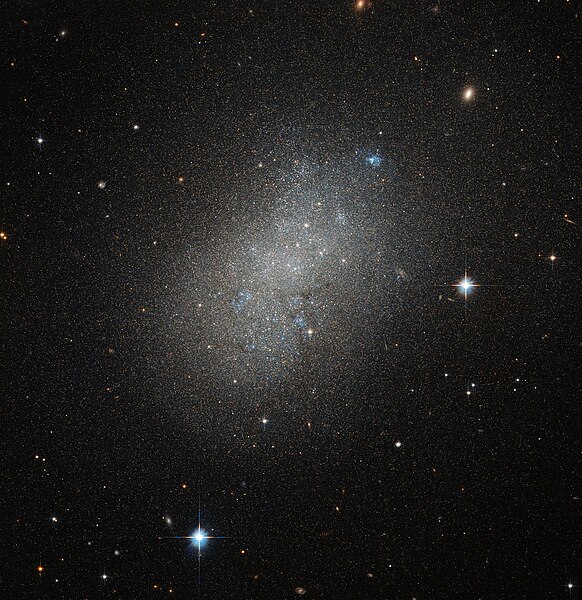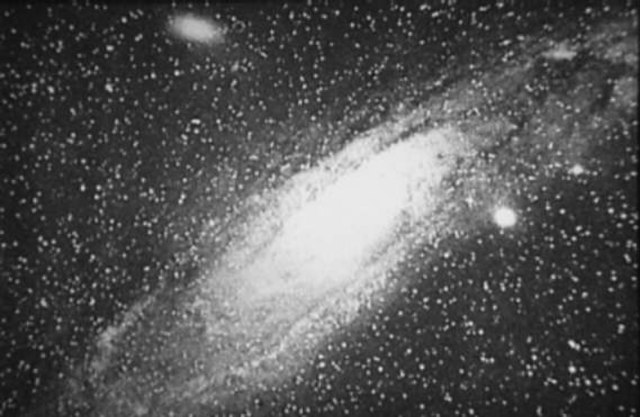A dwarf galaxy is a small galaxy composed of about 1000 up to several billion stars, as compared to the Milky Way's 200–400 billion stars. The Large Magellanic Cloud, which closely orbits the Milky Way and contains over 30 billion stars, is sometimes classified as a dwarf galaxy; others consider it a full-fledged galaxy. Dwarf galaxies' formation and activity are thought to be heavily influenced by interactions with larger galaxies. Astronomers identify numerous types of dwarf galaxies, based on their shape and composition.
The Large Magellanic Cloud, a satellite galaxy of the Milky Way
Dwarf galaxies like NGC 5264 typically possess around a billion stars.
The Phoenix Dwarf Galaxy is a dwarf irregular galaxy, featuring younger stars in its inner regions and older ones at its outskirts.
UGC 11411 is a galaxy known as an irregular blue compact dwarf (BCD) galaxy.
A galaxy is a system of stars, stellar remnants, interstellar gas, dust, and dark matter bound together by gravity. The word is derived from the Greek galaxias (γαλαξίας), literally 'milky', a reference to the Milky Way galaxy that contains the Solar System. Galaxies, averaging an estimated 100 million stars, range in size from dwarfs with less than a thousand stars, to the largest galaxies known – supergiants with one hundred trillion stars, each orbiting its galaxy's center of mass. Most of the mass in a typical galaxy is in the form of dark matter, with only a few percent of that mass visible in the form of stars and nebulae. Supermassive black holes are a common feature at the centres of galaxies.
NGC 4414, a typical spiral galaxy in the constellation Coma Berenices, is about 55,000 light-years in diameter and approximately 60 million light-years from Earth.
Photograph of the "Great Andromeda Nebula" by Isaac Roberts, 1899, later identified as the Andromeda Galaxy
The galaxy cluster Abell 1413 is dominated by this cD elliptical galaxy designated Abell 1413 BCG. It has an isophotal diameter of over 800,000 light-years across. Note the gravitational lensing.
NGC 3923 Elliptical Shell Galaxy (Hubble photograph)








